You are using an out of date browser. It may not display this or other websites correctly.
You should upgrade or use an alternative browser.
You should upgrade or use an alternative browser.
Need design help with this Art Deco Inspired Setting
- Thread starter lulu_ma
- Start date
lulu_ma
Ideal_Rock
- Joined
- Sep 9, 2020
- Messages
- 5,004
- Joined
- Aug 14, 2009
- Messages
- 27,494
I’ve seen and owned more old cuts than many vendors - some other PSers have seen and owned more old cuts than most antiques dealers. But our opinions and our collective experiences are only as relevant as you might choose to make them. If you’re happy then that’s the only thing that really matters, so I will simply say that I hope others will find my posts here helpful, and I wish you the best in choosing a setting and will bow out of your threads 
Last edited:
Dmndsr4evr11
Brilliant_Rock
- Joined
- Dec 9, 2018
- Messages
- 1,492
@diamondseeker2006 I hear what your are saying. I took the weekend to really evaluate the stone in different environments.
On Saturday was able to see the three OECs-G, J, and L-with somewhat comparable carat weights. The 3.99 ct G was so white, but at 52% depth had a terrible fish eye. The 5.07 J was nice but oblong and not great scintillation. The 4.72 L had a bit more fire than my stone, which I expect for 62% depth but it faced up so much more yellow. It's amazing how different these old stones all are. These stones are priced between $55k and $85K. And not one of them was perfect.
To be honest, I was really worried about the depth until I read about Dreamer Dachsie's gorgeous OEC which is also 54% deep. At 54% depth, my 4.11 should have a fish eye or dead petals, but somehow it doesn't. I don't really know why. Missy and FK couldn't figure it out either.
I mean, of course, I would the love OWD's 4.67 ct K/ VS1. But I just don't want to spend $60k on an OEC.
Finding an OEC is a little like shopping for a husband. My stone is smart, good looking, kind, but just a little bit shallow. I still want her. I will just have to be careful setting her-and I definitely need advice on how to do that properly!
Dmndsr4evr11
Brilliant_Rock
- Joined
- Dec 9, 2018
- Messages
- 1,492
The difficulty is that so much of "how to make a spready stone perform optimally" really depends on why it's spready in the first place.
In this stone - the angular differential between proximal mains and between those mains and their adjacent lower halves is just too small to allow only one under-table facet at a time to obstruct, return light, or become ineffective as you tilt the stone. That's what's causing the "large mirror plane", or "dead area" effect that we can see in Alex Park's original video, and that also appears in your photos and videos.
Alex's photos and videos honestly appraise the stone. His verbiage, on the other hand... Somewhere between wishful thinking and outright asinine. Should've been graded higher on colour - I write that off every time I hear any vendor say that (or the same of clarity) because it's quite literally never actually true. And the reputable labs do in fact clean stones before they grade them, so the insinuation that a grubby girdle reduced colour grade is idiotic.
Recutting the stone to achieve delineation between the pavilion facets would dramatically decrease spread, which is of course a very unappealing optioin. Choose a setting that encases a significant amount of the pavilion, from girdle to culet (but without metal actually touching the stone) can "fake" pavilion facet delineation by tricking the viewer into thinking that reflections of the interior of the mount that refract back into the stone are actually artifacts of the stone scintillating. It won't look nearly dramatic as an actual obstruction/refraction pattern that's created by total internal reflection, and it won't yield the bold dispersions that effective total internal reflection is renown for, but it can mitigate those visual "mirror planes".
You've probably seen it said on here that shallow stones show less body colour. That's because body colour is a product of accumulation of tint over layers and layers and layers of tinted diamond - a less deep diamond has fewer layers of tinted material to see through, so to speak. If you turn two same-colour (actually same-colour, not just same lab colour designation) diamonds table-down, like you're grading them, and one has significantly more depth than the other - you'd see that the deeper one looks more tinted.
But that's face-down. Face-up - optics has a much bigger impact. Any OEC, well cut or less well cut, will return some of the light that enters the stone from the top back out through the top. For the light that enters from the top that will eventually exit out the top, both an overly shallow stone and an overly deep stone will make that light bounce around inside the stone a lot more before it exits. Better way to say that: Both overly shallow and overly deep stones increase the path length of incident light (path length is a measure of how far light travels inside the stone before it exits). The longer the path length, the longer the light stays inside the stone before it exits, the more energy is absorbed, and the more tinted it is on output. This is why an ideal cut stone is so bright compared even to a shallower but less well cut stone - optimal proportions minimize path length.
When loose, an overly-shallow stone and an overly-deep stone will also both draw light through the pavilion and return it face-up. If you enclose the pavilion to attempt to force visual pavilion facet differentiation, you block all of that light that's coming in through the pavilion, so the stone will look darker and duller face-up. In addition, you create a reflection chamber, wherein light that escapes out the bottom of the stone ("leaks") that would normally go off into the ether is now reflecting off the inside of the basket and re-entering the stone - so the path length of some of the light that exits out the stone is going to be 2x, or more!! Encasing the pavilion of this stone will make it look darker and more tinted - I would guess more than even a well-cut N or O/P coloured OEC.
I'll be honest... And I say this only here on RT, not in SMTB... Alex's stones usually sell very quickly, pressure's on to BuyRightNow - there's precious little time for measured consideration. But an expense of $26000 deserves measured consideration. Most of the RT and OEC long-timers would have advised against this stone - including FK, elizat, Spring Day, and DS. Because you originally wanted a well cut stone. And you didn't get that, or even really close to that, and it's not fixable without sacrificing hugely on spread - a deeper stone is a more forgiving proposition. And I think that if one day you compare this stone to a genuinely good performer... They're out there, I promise!! The difference may well be more stark than you're comfortable with.
If you're within a return period with Alex - that'd be my suggestion, because in my view this is just far too much money to compromise this much, given my understanding of your priorities. But I acknowledge that I may not be understanding your priorities correctly. Ultimately the only person you have to please is yourself of course - if this stone makes your heart sing the way my rose cuts make mine sing then that's what you need to do!
Wow! You are a wealth of knowledge, @yssie. Now, I feel bad that I posted this stone for @lulu_ma to consider just by the size and color she was looking for. Didn’t have the specs listed then or didn’t see it. Just the IG video and quick look at what seems like an amazing stone to my untrained eyes. Her own pics look amazing too. But again, to my untrained eyes. Glad to have old cut experts here. Will certainly seek your advice in the future first.
lulu_ma
Ideal_Rock
- Joined
- Sep 9, 2020
- Messages
- 5,004
@Dmndsr4evr11 don't feel bad. I LOVE my stone. No antique stone is going to be perfect in every regard. It's just what you can personally live with. Color and lovely facets are my top priorities and this diamond has that in spades. I posted this setting advice thread after I had already decided to keep her.
- Joined
- Mar 11, 2013
- Messages
- 2,481
I have always looked at buying antique diamonds as mostly serendipity. You’ve got to know what pleases you. You will be surprised at what shows up. You’ve got to have a thick skin here.
Some people (like me) do not want to spend $55-75k on a perfect (nowadays questionable antique cut that is very potentially a modern cut) diamond. The PS experts here have stones with cut styles that we are asked to emulate and seek out. This leaves very little flexibility on price and on what we can find: actual, real, antique stones that offer us both what we crave (size, color, fire) plus something we have never seen before. We trust in our eyes and taste, and buy the non prototypes.
lulu_ma, I went and reviewed Park’s Fine Group Instagram for your 4.11 carat M OEC and I really like it. It has big broad facets and edge to edge gorgeous shimmer. In some light you can see artifacts of the shallow cut, but in other light the faceting is in fact stunning and like I said, edge to edge bright. The color is lovely.
A very shallow antique stone I still dream about had a center that was translucent all the time, but it had big blocky fiery light return all around the edges. It was all crown, runty pavilion and big culet. I took it to a public garden in evaluating it and it transformed into The Rainbow Blaster. The size of that stone was incredible. It was an antique cut diamond that was very old, likely out of a 19th century necklace. It reflected blocky chunks of colored light. I’m waxing poetic about this stone that had such a nice weight in my hand.
I “had” to return it because I was afraid that if I bought it people here wouldn’t understand why. I was afraid if I ever had to sell it people wouldn’t understand or like it. Now I’m seeing non typical stones like it all the time, set into settings that enhance the stone’s cut, and I wish I still had that stone. The vendor recut it immediately after I returned it!
I really think your’s is a beautiful diamond and I can see why you love it.
Some people (like me) do not want to spend $55-75k on a perfect (nowadays questionable antique cut that is very potentially a modern cut) diamond. The PS experts here have stones with cut styles that we are asked to emulate and seek out. This leaves very little flexibility on price and on what we can find: actual, real, antique stones that offer us both what we crave (size, color, fire) plus something we have never seen before. We trust in our eyes and taste, and buy the non prototypes.
lulu_ma, I went and reviewed Park’s Fine Group Instagram for your 4.11 carat M OEC and I really like it. It has big broad facets and edge to edge gorgeous shimmer. In some light you can see artifacts of the shallow cut, but in other light the faceting is in fact stunning and like I said, edge to edge bright. The color is lovely.
A very shallow antique stone I still dream about had a center that was translucent all the time, but it had big blocky fiery light return all around the edges. It was all crown, runty pavilion and big culet. I took it to a public garden in evaluating it and it transformed into The Rainbow Blaster. The size of that stone was incredible. It was an antique cut diamond that was very old, likely out of a 19th century necklace. It reflected blocky chunks of colored light. I’m waxing poetic about this stone that had such a nice weight in my hand.
I “had” to return it because I was afraid that if I bought it people here wouldn’t understand why. I was afraid if I ever had to sell it people wouldn’t understand or like it. Now I’m seeing non typical stones like it all the time, set into settings that enhance the stone’s cut, and I wish I still had that stone. The vendor recut it immediately after I returned it!
I really think your’s is a beautiful diamond and I can see why you love it.
Last edited:
Dmndsr4evr11
Brilliant_Rock
- Joined
- Dec 9, 2018
- Messages
- 1,492
@Dmndsr4evr11 don't feel bad. I LOVE my stone. No antique stone is going to be perfect in every regard. It's just what you can personally live with. Color and lovely facets are my top priorities and this diamond has that in spades. I posted this setting advice thread after I had already decided to keep her.
Glad you are happy with it, LOVE” it and feel it’s a keeper. Phew! I would have felt horrible sending you that link. It’s like a now or never type deal and didn’t want you to miss it. Can’t wait for the finished ring. All the best to you!
lulu_ma
Ideal_Rock
- Joined
- Sep 9, 2020
- Messages
- 5,004
Glad you are happy with it, LOVE” it and feel it’s a keeper. Phew! I would have felt horrible sending you that link. It’s like a now or never type deal and didn’t want you to miss it. Can’t wait for the finished ring. All the best to you!
@Dmndsr4evr11 what's important to me is that you and the OEC Insta Posse thought of me and reached out to me. That is what I love most about PS-the supportive and (mostly) positive vibe. The end of the day, these gems are just objects that bring us some kind of happiness. And it's nice to share that joy with others that are like-minded.
lulu_ma
Ideal_Rock
- Joined
- Sep 9, 2020
- Messages
- 5,004
I have always looked at buying antique diamonds as serendipity. You’ve got to know what pleases you. You will be surprised at what shows up. You’ve got to have a thick skin here.
Some people (like me) do not want to spend $55-75k on a perfect (nowadays questionable antique cut that is very potentially a modern cut) diamond. The PS experts here have stones with cut styles that we are asked to emulate and seek out. This leaves very little flexibility on price and on what we can find: actual, real, antique stones that offer us both what we crave (size, color, fire) plus something we have never seen before. We trust in our eyes and taste, and buy the non prototypes.
lulu_ma, I went and reviewed Park’s Fine Group Instagram for your 4.11 carat M OEC and I really like it. It has big broad facets and edge to edge gorgeous shimmer. In some light you can see artifacts of the shallow cut, but in other light the faceting is in fact stunning and like I said, edge to edge bright. The color is lovely.
A very shallow antique stone I still dream about had a center that was translucent all the time, but it had big blocky fiery light return all around the edges. It was all crown, runty pavilion and big culet. I took it to a public garden in evaluating it and it transformed into The Rainbow Blaster. The size of that stone was incredible. It was an antique cut diamond that was very old, likely out of a 19th century necklace. It reflected blocky chunks of colored light. I’m waxing poetic about this stone that had such a nice weight in my hand.
I “had” to return it because I was afraid that if I bought it people here wouldn’t understand why. I was afraid if I ever had to sell it people wouldn’t understand or like it. Now I’m seeing non typical stones like it all the time, set into settings that enhance the stone’s cut, and I wish I still had that stone. The vendor recut it immediately after I returned it!
I really think your’s is a beautiful diamond and I can see why you love it.
THANK YOU @LightBright for your telling your story. I'm so sorry about the "one that got away." It's just tragic that the Rainbow Blaster was recut. That's how I ultimately decided to go with this stone. I knew that if I gave her up, I would regret it. She's my first OEC and I think she's so pretty-to me.
As I have said many times, I am an OEC newbie. But, I'm also an (over) researcher. I collected enough data to make an educated decision-for me. I have to do that all the time for my work. Irl, I'm an interior designer so I have a definite sense of what I do and don't like. Bottomline, I wouldn't be spending this money if I didn't think this stone was worth it.
Anyway, I really appreciate you sharing your perspective!
Last edited:
- Joined
- Aug 14, 2009
- Messages
- 27,494
I just want to chime in here - @Dmndsr4evr11 - absolutely nothing to feel remotely guilty about! I certainly don’t want any of my posts here to make anyone else feel guilty. As @lulu_ma said already but I’ll ditto it anyway - she chose her own stone, and she’s happy with her choice, and that’s always the best case outcome!
Everyone really has different priorities. Even given the same set of facts, if one person’s (or group’s) priorities are different from another’s then those people might make opposite decisions. Which is of course what’s happened. No objective right or wrong, just what decision best fits @lulu_ma’s goals. Like... I own RBs, OECs, rose cuts, briolettes - my goals were different when I bought those stones... And let’s be real, some PSers probably think some of them are wastes of money! So the reason that I’m stepping back is that since I don’t share or even fully understand her priorities, I can’t assist with her goals in mind. I can’t speak for @lulu_ma but I imagine she feels the same way. It isn’t personal
Everyone really has different priorities. Even given the same set of facts, if one person’s (or group’s) priorities are different from another’s then those people might make opposite decisions. Which is of course what’s happened. No objective right or wrong, just what decision best fits @lulu_ma’s goals. Like... I own RBs, OECs, rose cuts, briolettes - my goals were different when I bought those stones... And let’s be real, some PSers probably think some of them are wastes of money! So the reason that I’m stepping back is that since I don’t share or even fully understand her priorities, I can’t assist with her goals in mind. I can’t speak for @lulu_ma but I imagine she feels the same way. It isn’t personal
Last edited:
- Joined
- Oct 24, 2012
- Messages
- 12,692
The difficulty is that so much of "how to make a spready stone perform optimally" really depends on why it's spready in the first place.
In this stone - the angular differential between proximal mains and between those mains and their adjacent lower halves is just too small to allow only one under-table facet at a time to obstruct, return light, or become ineffective as you tilt the stone. That's what's causing the "large mirror plane", or "dead area" effect that we can see in Alex Park's original video, and that also appears in your photos and videos.
Alex's photos and videos honestly appraise the stone. His verbiage, on the other hand... Somewhere between wishful thinking and outright asinine. Should've been graded higher on colour - I write that off every time I hear any vendor say that (or the same of clarity) because it's quite literally never actually true. And the reputable labs do in fact clean stones before they grade them, so the insinuation that a grubby girdle reduced colour grade is idiotic.
Recutting the stone to achieve delineation between the pavilion facets would dramatically decrease spread, which is of course a very unappealing optioin. Choose a setting that encases a significant amount of the pavilion, from girdle to culet (but without metal actually touching the stone) can "fake" pavilion facet delineation by tricking the viewer into thinking that reflections of the interior of the mount that refract back into the stone are actually artifacts of the stone scintillating. It won't look nearly dramatic as an actual obstruction/refraction pattern that's created by total internal reflection, and it won't yield the bold dispersions that effective total internal reflection is renown for, but it can mitigate those visual "mirror planes".
You've probably seen it said on here that shallow stones show less body colour. That's because body colour is a product of accumulation of tint over layers and layers and layers of tinted diamond - a less deep diamond has fewer layers of tinted material to see through, so to speak. If you turn two same-colour (actually same-colour, not just same lab colour designation) diamonds table-down, like you're grading them, and one has significantly more depth than the other - you'd see that the deeper one looks more tinted.
But that's face-down. Face-up - optics has a much bigger impact. Any OEC, well cut or less well cut, will return some of the light that enters the stone from the top back out through the top. For the light that enters from the top that will eventually exit out the top, both an overly shallow stone and an overly deep stone will make that light bounce around inside the stone a lot more before it exits. Better way to say that: Both overly shallow and overly deep stones increase the path length of incident light (path length is a measure of how far light travels inside the stone before it exits). The longer the path length, the longer the light stays inside the stone before it exits, the more energy is absorbed, and the more tinted it is on output. This is why an ideal cut stone is so bright compared even to a shallower but less well cut stone - optimal proportions minimize path length.
When loose, an overly-shallow stone and an overly-deep stone will also both draw light through the pavilion and return it face-up. If you enclose the pavilion to attempt to force visual pavilion facet differentiation, you block all of that light that's coming in through the pavilion, so the stone will look darker and duller face-up. In addition, you create a reflection chamber, wherein light that escapes out the bottom of the stone ("leaks") that would normally go off into the ether is now reflecting off the inside of the basket and re-entering the stone - so the path length of some of the light that exits out the stone is going to be 2x, or more!! Encasing the pavilion of this stone will make it look darker and more tinted - I would guess more than even a well-cut N or O/P coloured OEC.
I'll be honest... And I say this only here on RT, not in SMTB... Alex's stones usually sell very quickly, pressure's on to BuyRightNow - there's precious little time for measured consideration. But an expense of $26000 deserves measured consideration. Most of the RT and OEC long-timers would have advised against this stone - including FK, elizat, Spring Day, and DS. Because you originally wanted a well cut stone. And you didn't get that, or even really close to that, and it's not fixable without sacrificing hugely on spread - a deeper stone is a more forgiving proposition. And I think that if one day you compare this stone to a genuinely good performer... They're out there, I promise!! The difference may well be more stark than you're comfortable with.
If you're within a return period with Alex - that'd be my suggestion, because in my view this is just far too much money to compromise this much, given my understanding of your priorities. But I acknowledge that I may not be understanding your priorities correctly. Ultimately the only person you have to please is yourself of course - if this stone makes your heart sing the way my rose cuts make mine sing then that's what you need to do!
Just sayin'. I wish I had known all this stuff before doing any of my settings. @lulu_ma since you are happy with this stone, this awesome analysis can be very helpful in your design of your setting. You want something true to the period, but nothing that encloses your stone too much. (That's what my very elementary brain took away.) So I'm thinking very fine and minimal metal work in the basket. Some of those settings with all the metal may not work as well. What if you choose an 8 prong solitaire setting that will give your diamond enough protection, but not enclose it?
How about something from CVB? She has the most beautiful design aesthetic, delicate settings, understands old cuts. I would trust any advice from her.
This is her Greta. I wonder if she could make this in an 8 prong. Lots of light let in. And maybe see what her suggestions are for the basket.
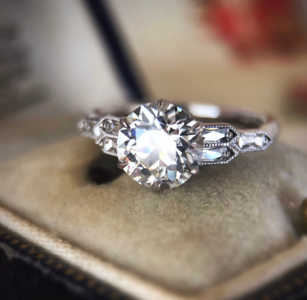
Last edited:
lulu_ma
Ideal_Rock
- Joined
- Sep 9, 2020
- Messages
- 5,004
@LLJsmom I did listen to what Yssie said about the gallery. I emailed one of the PS preferred vendors to get a setting quote/ advice.
Initially, my thought was to get a temp setting like the Margot 8 prong. But, ultimately, I love the look of this Art Deco setting. I'm just wondering the gallery can be modified to mimic a foil wrap like the ones commonly used to maximize the beauty of rose cuts. But I totally be on the wrong track too. I'll just have to wait for vendor feedback.
p.s. love your ugly doll
Initially, my thought was to get a temp setting like the Margot 8 prong. But, ultimately, I love the look of this Art Deco setting. I'm just wondering the gallery can be modified to mimic a foil wrap like the ones commonly used to maximize the beauty of rose cuts. But I totally be on the wrong track too. I'll just have to wait for vendor feedback.
p.s. love your ugly doll
- Joined
- Oct 24, 2012
- Messages
- 12,692
@LLJsmom I did listen to what Yssie said about the gallery. I emailed one of the PS preferred vendors to get a setting quote/ advice.
Initially, my thought was to get a temp setting like the Margot 8 prong. But, ultimately, I love the look of this Art Deco setting. I'm just wondering the gallery can be modified to mimic a foil wrap like the ones commonly used to maximize the beauty of rose cuts. But I totally be on the wrong track too. I'll just have to wait for vendor feedback.
p.s. love your ugly doll
The Margot is stunning. I guess I'm wondering if you can get a solitaire type with an art deco feel. There was another one Caysie did, that had vertical baguettes on the left and right. I will see if I can find it. It totally channels art deco, but without the "enclosed" art deco style. That's what I mean that Caysie can help with.
lulu_ma
Ideal_Rock
- Joined
- Sep 9, 2020
- Messages
- 5,004
- Joined
- Oct 24, 2012
- Messages
- 12,692
Sorry I don't mean to confuse you. I reread the post. I think this is what I understand. Enclosing it will emphasize the color, which is what I did with mine, and I ended up not loving it. But enclosing it will also help it to look livelier. It's kinda tough to balance. I guess that's why I suggested Caysie cause she has such a good eye. Anyhoo, I know the mistake I made. I hope whichever designer you choose, they can help you navigate the particular personality of your stone.
Last edited:
The Margot is stunning. I guess I'm wondering if you can get a solitaire type with an art deco feel. There was another one Caysie did, that had vertical baguettes on the left and right. I will see if I can find it. It totally channels art deco, but without the "enclosed" art deco style. That's what I mean that Caysie can help with.
I think it is called the Greta/Gretta. I like that one.
Is it this one?
This item is unavailable - Etsy
Find the perfect handmade gift, vintage & on-trend clothes, unique jewelry, and more… lots more.
- Joined
- Jan 11, 2006
- Messages
- 58,581
And just so you know, I totally meant it when I said I wish I had @yssie to consult with before choosing my VC octagonal setting. I love that setting. But, to me, overtime, and I stress that, I mean years (1-2) I started noticing the tint more and more. And my OEC is a K. If I could do it over, I would go for a setting that just let more light in. I probably would have chosen the Margot. But I did not know that I would feel that way. So it's not that you don't love your stone now. I truly believe you do. It's just that there are things you may learn about it, or your taste might develop, change, or time. And peeps that have had these old cuts for many years, are trying to share that with you, and mitigate any potential observations you may have in the near and further future. Get what I mean?
Amen to that. I need @yssie to help me with anything regarding old cuts and pearls at this point! By the way, what in the world is in your avatar picture!
@lulu_ma Can't wait to see what you decide! Take your time. It is a big decision!
lulu_ma
Ideal_Rock
- Joined
- Sep 9, 2020
- Messages
- 5,004
I think it is called the Greta/Gretta. I like that one.
Is it this one?
This item is unavailable - Etsy
Find the perfect handmade gift, vintage & on-trend clothes, unique jewelry, and more… lots more.www.etsy.com
@LLJsmom Well I'll have to give this one strong consideration as it's my younger daughter's name!
- Joined
- Oct 24, 2012
- Messages
- 12,692
LOL!! That's my ugly doll. I have a whole family of them. Wanted some color is all. And to echo @diamondseeker2006 , do take your time. Please don't be offended. I would maybe wear it as a solitaire (do you have a temp setting?) just to get to know it. How it behaves, in what light, at what time of day, in what room, with what walls... Sounds crazy but OECs definitely have a personality of their own. Maybe that will make a difference on the setting you choose. Wait, what kind of setting is it in now?
- Joined
- Oct 24, 2012
- Messages
- 12,692
@LLJsmom no setting!
Oh, I see. It's loose. Sorry, I'm slow. Is there a possibility for a temp setting? Or are you fully ready to commit now? It's not even so much the money, as the "right" setting.
- Joined
- Oct 24, 2012
- Messages
- 12,692
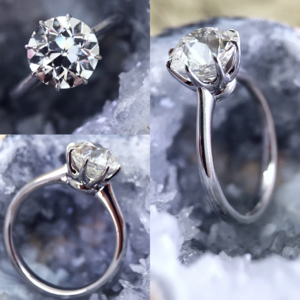
If you want a temp 8 prong (temp meaning 0-2 years) I would definitely consider this. I love this setting. It's wayyyyyyyy cheaper than the Margot (+$5K). I wonder if Stuller has some 8 prong settings...
And here is Caysie's thread. If you haven't already gone through it, you should. If nothing else, it will give you ideas. But you can see how she designs for the stone. That's my impression anyway.
Show us your CvB ID jewelry! (The New CvB Eye-Candy Thread)
Currently working with Caysie on this. I have the center stone and she's sourcing the sides. I'm so freaking excited!!!!!!! My DREAM Cluster ring soxfan!!!!:love::love::love:
www.pricescope.com
lulu_ma
Ideal_Rock
- Joined
- Sep 9, 2020
- Messages
- 5,004
- Joined
- Apr 28, 2014
- Messages
- 4,094
@lulu_ma I’m all for getting your dream setting if you know what you want but I’m going to throw a suggestion out there for a temp setting since it was pretty popular around here a few years ago. It’s a very pretty Stuller crown setting that several PSers have and it’s affordable (you’ll have to check with a jeweler to purchase since Stuller won’t sell to individuals)....might be worth it as an inexpensive setting investment.

 www.stuller.com
www.stuller.com
@kayla17 used to house her beautiful ACA in the one I’m thinking of..... https://www.pricescope.com/community/threads/3-321-aca-in-stuller-crown-setting.231646/
And here’s another from @Volvoqueen https://www.pricescope.com/community/threads/avr-in-stuller-crown-setting.239287/
14K White 10 mm Round Engagement Ring Mounting
122004 / Solitaire / Engagement Ring / Unset / 14K White / Round / 10 mm / Polished / Engagement Ring Mounting
@kayla17 used to house her beautiful ACA in the one I’m thinking of..... https://www.pricescope.com/community/threads/3-321-aca-in-stuller-crown-setting.231646/
And here’s another from @Volvoqueen https://www.pricescope.com/community/threads/avr-in-stuller-crown-setting.239287/
lulu_ma
Ideal_Rock
- Joined
- Sep 9, 2020
- Messages
- 5,004
Thanks @ac117 ugh. This exactly the kind of temp setting I was thinking of doing except with 8 prongs. Tiny hiccup it only goes up to 10mm...
Do you happen to remember about how much these settings run? I wonder if it would be worth it to get one and see if the prongs can be customized...
Do you happen to remember about how much these settings run? I wonder if it would be worth it to get one and see if the prongs can be customized...
AllAboardTheBlingTrain
Ideal_Rock
- Joined
- Apr 22, 2020
- Messages
- 3,418
Thanks @ac117 ugh. This exactly the kind of temp setting I was thinking of doing except with 8 prongs. Tiny hiccup it only goes up to 10mm...
Do you happen to remember about how much these settings run? I wonder if it would be worth it to get one and see if the prongs can be customized...
Just throwing in the name of David Klass who I see mentioned on the forum a lot as someone who does reasonably priced, high quality, custom cast settings - perhaps enquire with him also about what a 8 prong simple solitaire in 14kt would set you back while you figure out exactly what you want in your final setting?
lulu_ma
Ideal_Rock
- Joined
- Sep 9, 2020
- Messages
- 5,004
@AllAboardTheBlingTrain that's a great idea. I know everybody loves him. And why are all good benches on the West Coast? Not fair for us East Coasters!
Share:
The Ultimate Guide to Men’s Wedding Bands: Metals, Fit & Finish
The Ultimate Guide to Men’s Wedding Bands: Metals, Fit & Finish - 06/27
Chipped Diamonds: Causes, Risks, and What You Should Do About It
Chipped Diamonds: Causes, Risks, and What You Should Do About It - 06/27

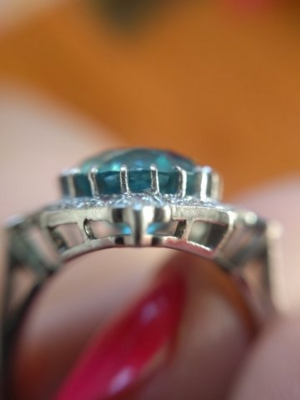
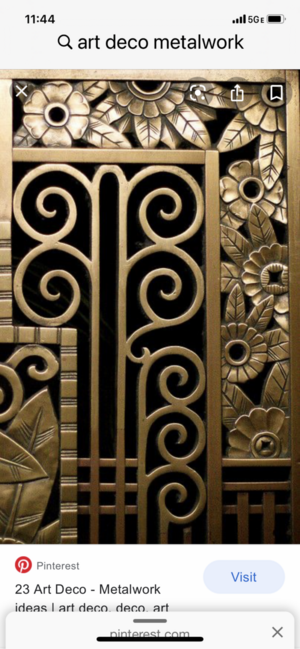
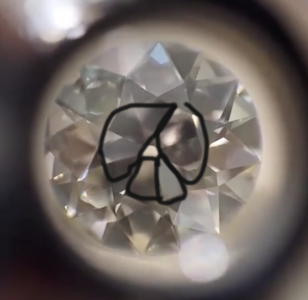
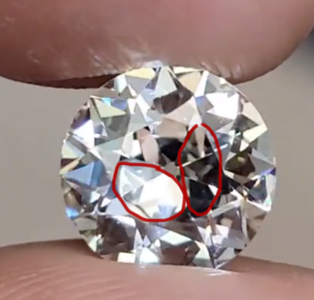
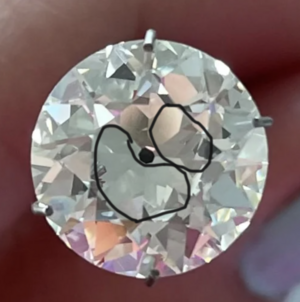
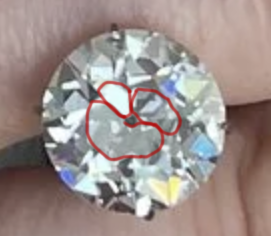
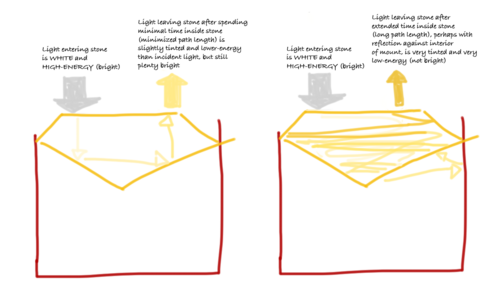


300x240.png)